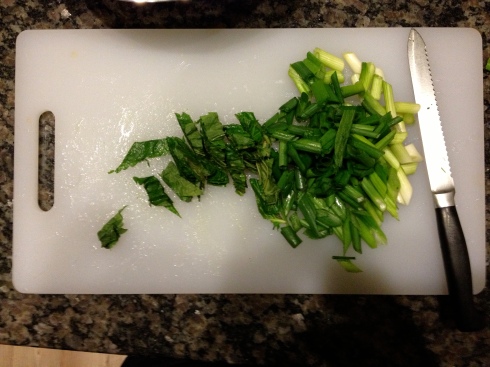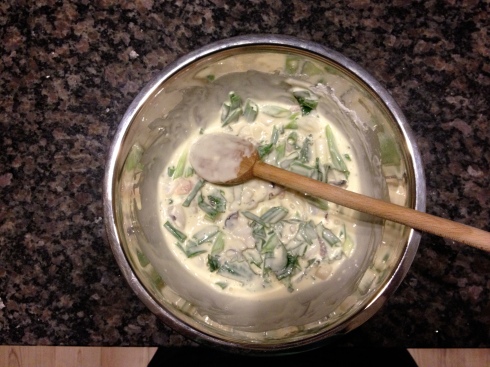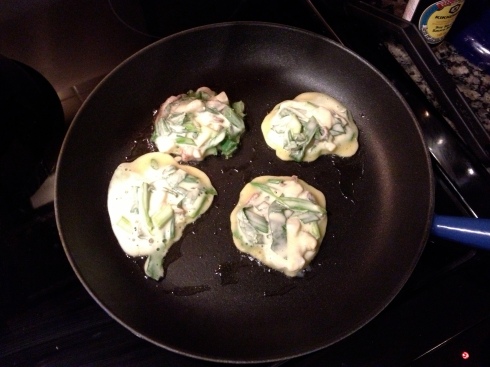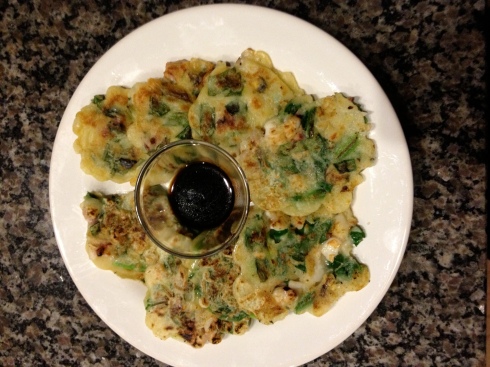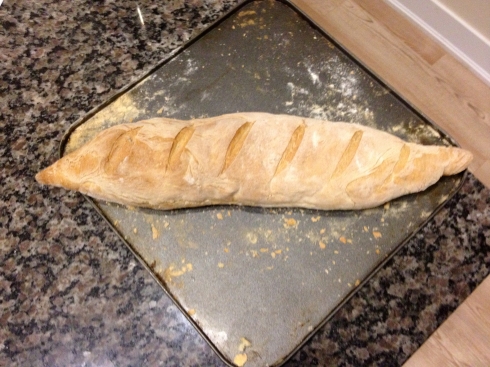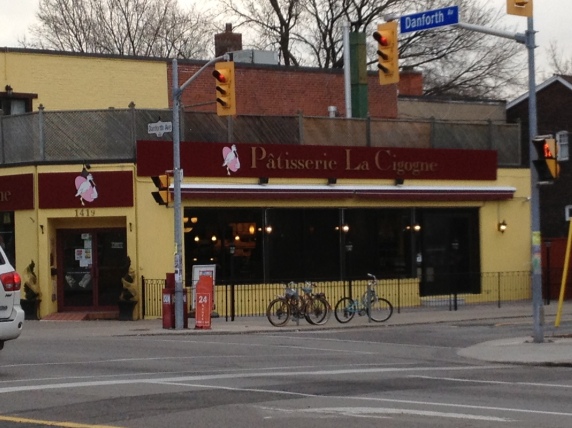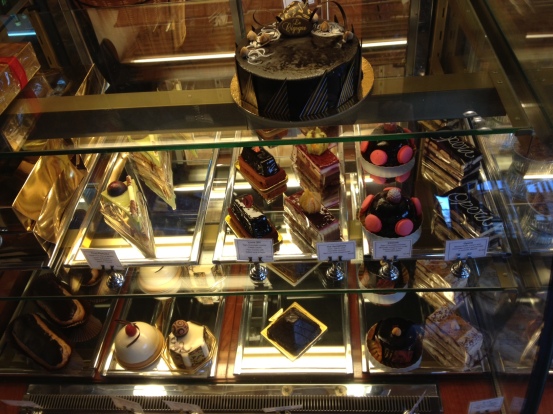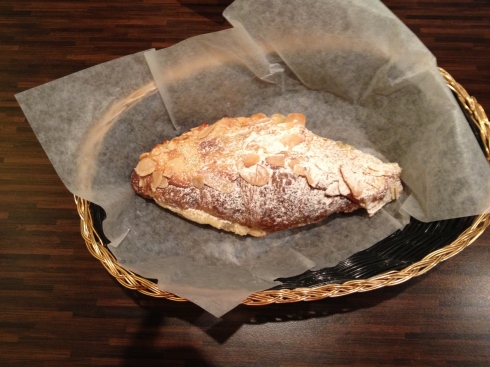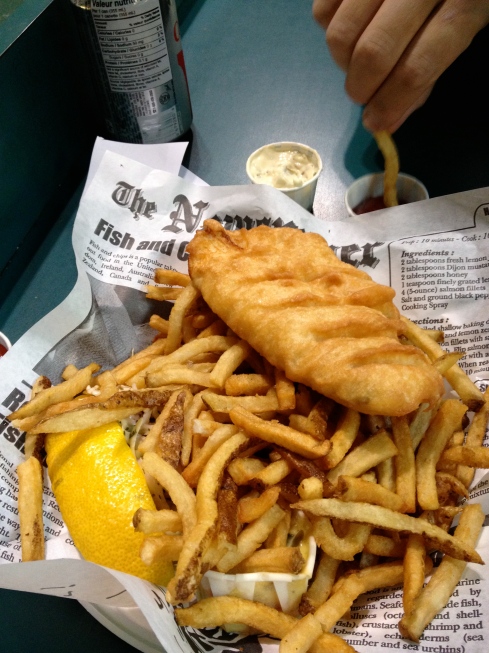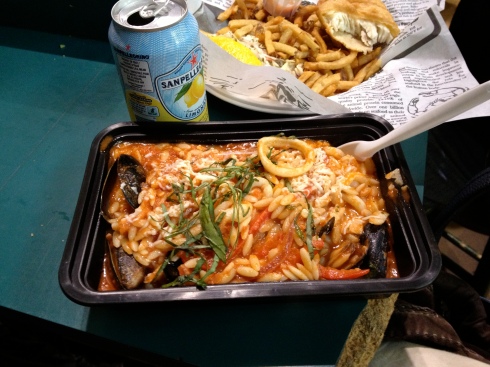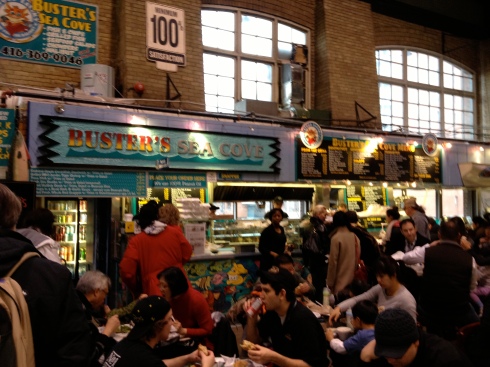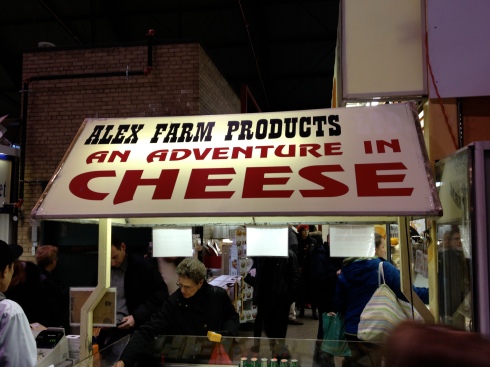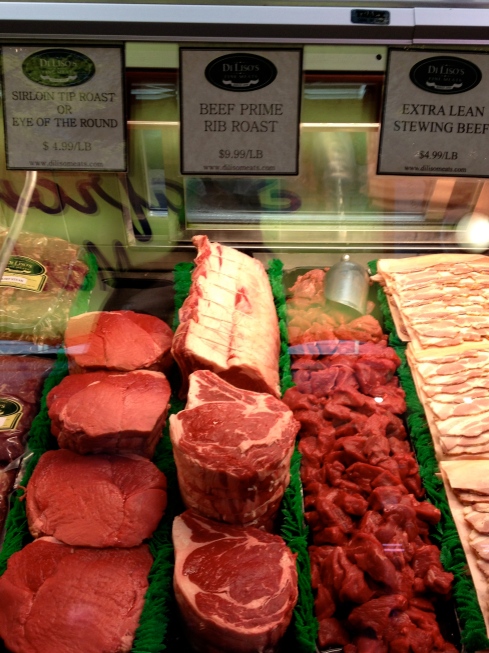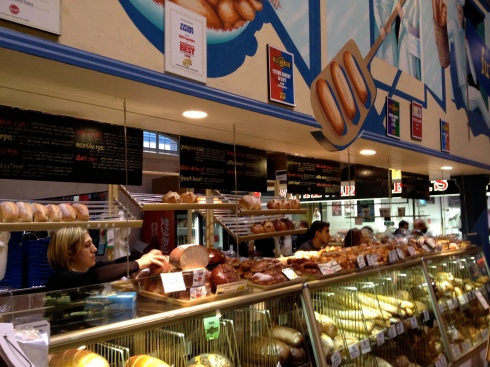I’m a big fan of pretty much every type of pancake from the classic English sugar and lemon drenched pancake to thin and crispy French crepes (a friend has introduced me to a great creperie, Crêpes à GoGo, just opposite Toronto Reference Library). One of my most vivid memories of living in Germany as a child is eating crepes filled with chocolate and nuts (and managing to end up with chocolate all round my mouth and on my nose too!) in the chill cold and excitement of Aachen’s Christmas market. And one of my favourite breakfasts is Mr Kim’s light and fluffy American pancakes bursting with blueberries and swirled in maple syrup accompanied by crunchy bacon. In fact such is my enthusiasm for this breakfast that when we moved to Canada last friends jokingly suggested that we might have been involved in the great Canadian maple syrup heist. More recently Korean pajeon have been added to my pancake lexicon. Pajeon are savoury pancakes with spring onion and then a whole range of other ingredients depending on taste. They’re often made fairly small, 8cm d., and served with soy sauce.
The ingredients for the pajeon; pajeon mix, seafood, sesame leaves and spring onions
The sesame leaves and spring onions are chopped up
Since I’m by myself this Shrove Tuesday I decided that pajeon would be a good choice for marking the occasion (something English or American pancakes don’t work solo – I’m no good at making up batter for just one person). Pajeon work well being made in advance and then heated up whenever you want to eat them. My Shrove Tuesday pajeon were made with spring onion, sesame leaves (I love the taste of these) and seafood, and the mixing was made particularly easy by using ready to make pajeon mix. I’d been taught how to make them with my mother-in-law last October so now was a great time to practise. There might not be any flipping involved but I still wanted to make sure that I got them right.
A cup of water is added to a cup of pajeon mix and the sesame leaves and spring onions are added along with a couple of cups of seafood mix
Using a quarter cup measure the pajeon are placed in a frying pan on a medium heat and given a few minutes on each side, so that they are nicely brown. It’s worthwhile squashing them down so that the middle is definitely fully cooked.
One of the aspects of Toronto which particularly struck us when we arrived was the size of the Korean population, which means finding and eating Korean food in Toronto is so much easier than in the UK. Our favourite Korean restaurant in England is Hamgipak in New Malden who make delicious pajeon and if you want to try making pajeon yourself you might be able to find the pajeon mix in a south east Asian grocery store, like Thong Heng in Oxford. Otherwise a straightforward English pancake batter with the addition of spring onions and prawns would make a pretty good equivalent.
The finished pajeon served with some soy sauce
Happy Pancake Day!

